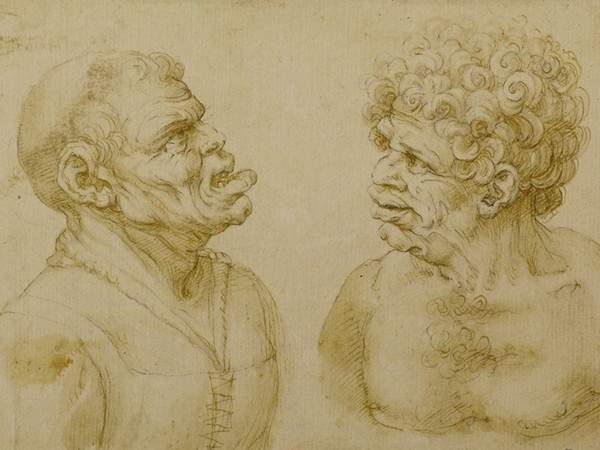Milan, Leonardo da Vinci drawings from Milanese collections on display at Castello Sforzesco
From September 11 to December 15, 2019, the Sala dei Ducali at Castello Sforzesco hosts the exhibition Around Leonardo. Graphic Works from the Milanese Collections.
The exhibition, curated by Giovanna Mori and Alessia Alberti, the result of the collaboration between the Veneranda Biblioteca Ambrosiana and the Castello Sforzesco, focuses on the fortune and diffusion of some of Leonardo da Vinci ’s ( Vinci, 1452 - Amboise, 1519) graphic inventions and is part of the Leonardo mai visto program that encompasses all the initiatives organized at the Castello Sforzesco, on the occasion of the celebrations of the 500th anniversary of the death of the Tuscan genius.
The exhibition presents nine precious and rare graphic works, created between the 1590s and the end of the 16th century, which tell the story of the success of the subjects Leonardo dealt with. Such subjects left significant traces in the work of painters in Leonardo’s circle and artists of later centuries.
The tour begins with the Head of Leda (circa 1504-1506), a drawing belonging to the civic collections of the Castello Sforzesco. The sheet, an autograph by Leonardo, later retouched by his pupils, is a red-pencil study that fixes the image of the face of the mythical Leda, for whose love Jupiter turned into a swan and from whose union the Dioscuri were born, then continues with three plates of the so-called “vinciani knots,” decorative motifs engraved with a burin starting from Leonardo’s inventions, made within his workshop in the mid-1590s and known today in very few examples. The complete series of the six “vincian knots” is preserved in the collections of the Veneranda Biblioteca Ambrosiana in Milan.
The refined graphic works on the intertwining games will be able to be particularly appreciated by the audience coming from the nearby Sala delle Asse, where through the light show and virtual projections are precisely highlighted the geometries formed by the knots that intertwine with the mulberry branches, the tree that celebrated the political wisdom of Ludovico il Moro.
Also peculiar to Leonardo are the “heads of character,” and very significant was the influence of these in the portraiture of the artists of his time. Along the way we encounter an evocative drawing with two grotesque heads, previously unpublished and attributed to the Prague-born engraver Wenceslaus Hollar (Prague, 1607 - London, 1677) but possibly the work of the late 16th century, and a black-pencil study by Giovanni Agostino da Lodi (Lodi, c. 1470 - c. 1519), with a bearded male head, strongly evocative of the research on the expressions of faces in the Last Supper in Santa Maria delle Grazie.
The exhibition concludes with a focus on the horse motif, documented here through three very rare engravings, on watermarked papers, made between the late 15th and early 16th centuries in the circle of Giovanni Antonio da Brescia (active in the late 15th and first quarter of the 16th century). The sheets depict studies of horses for equestrian monuments that can most likely be associated with designs for Francesco Sforza and Gian Giacomo Trivulzio.
The works on display come from Milan institutions such as the Veneranda Biblioteca Ambrosiana, the Raccolta delle Stampe “Achille Bertarelli” and the Gabinetto dei Disegni del Castello Sforzesco.
For all information you can visit the official website of the Castello Sforzesco.
Pictured: Wenceslau Hollar (from Leonardo da Vinci), Two Character Heads (c. 1645-1666; black stone, pen, brush and ink on paper, 193 x 118 mm; Milan, Castello Sforzesco, Gabinetto dei Disegni)
 |
| Milan, Leonardo da Vinci drawings from Milanese collections on display at Castello Sforzesco |
Warning: the translation into English of the original Italian article was created using automatic tools. We undertake to review all articles, but we do not guarantee the total absence of inaccuracies in the translation due to the program. You can find the original by clicking on the ITA button. If you find any mistake,please contact us.





























